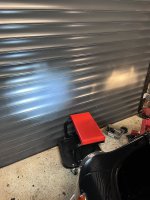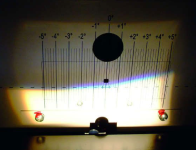You are using an out of date browser. It may not display this or other websites correctly.
You should upgrade or use an alternative browser.
You should upgrade or use an alternative browser.
Technical Indicators
- Thread starter JonPiz
- Start date
Currently reading:
Technical Indicators
If they are flashing very slow or staying on continuous most likely battery voltage low, enough to start the car but not enough to wake up the flasher unit.I know this is a silly question but I’ve got to ask. Do the indicators only work once the engine is running?
I have found in the past a new flasher unit would help.
In the old days as an MOT tester it used to have to flash between 60 and 120 flashes a minute I recall.
I’ve only driven the car once then garaged it to rebuild all the mechanics. I’m sure when I started it they worked but now nothing. I have ordered a new flasher unit in case that’s itIf they are flashing very slow or staying on continuous most likely battery voltage low, enough to start the car but not enough to wake up the flasher unit.
I have found in the past a new flasher unit would help.
In the old days as an MOT tester it used to have to flash between 60 and 120 flashes a minute I recall.
You could try jump leads from a good battery or put a voltmeter on battery to compare.I’ve only driven the car once then garaged it to rebuild all the mechanics. I’m sure when I started it they worked but now nothing. I have ordered a new flasher unit in case that’s it
the hobbler
Distinguished member
- Joined
- Jul 25, 2012
- Messages
- 4,352
- Points
- 1,093
Normally, they only work when the ignition is ON. If the car has not been used for a long time, the contacts inside the flasher-unit (especially if it is the original could be corroded. I agree, the first thing to fit would be another flasher unit---they are not very expensive. Also, as various people have suggested, make sure that the battery is properly charged, although with the engine running (and the ignition light out), there should be enough grunt in the battery to make the flashers work. Fanally, have you replaced the indiicators? As far as I am aware, all the indicator light units now available are to the "European" design where twin-filament bulds are utilised----even though side light are seperate in the UK, they STILL need double-filament bulbs in themYou could try jump leads from a good battery or put a voltmeter on battery to compare.
I haven’t changed the lights yet but I have ordered today a pair of RHD headlights and some double filament orange bulbs. I didn’t want to put orange lenses on the front but managed to source some bulbs in online in Italy. I have changed the main headlamp bulbs to led ones which are excellent compared to the dim original bulbsNormally, they only work when the ignition is ON. If the car has not been used for a long time, the contacts inside the flasher-unit (especially if it is the original could be corroded. I agree, the first thing to fit would be another flasher unit---they are not very expensive. Also, as various people have suggested, make sure that the battery is properly charged, although with the engine running (and the ignition light out), there should be enough grunt in the battery to make the flashers work. Fanally, have you replaced the indiicators? As far as I am aware, all the indicator light units now available are to the "European" design where twin-filament bulds are utilised----even though side light are seperate in the UK, they STILL need double-filament bulbs in them
the hobbler
Distinguished member
- Joined
- Jul 25, 2012
- Messages
- 4,352
- Points
- 1,093
The change to LED sounds very interesting---I would be very interested in hearing as to how you have achieved that. [email protected] The normal 500 head-lamps are so low in output (and so low physically!) that I can normally use "full-beam" when I driving in conditions that warrant the headlamps being on, without anybody 'flashing' me!I haven’t changed the lights yet but I have ordered today a pair of RHD headlights and some double filament orange bulbs. I didn’t want to put orange lenses on the front but managed to source some bulbs in online in Italy. I have changed the main headlamp bulbs to led ones which are excellent compared to the dim original bulbs
These were the bulbs. Straight swapThe change to LED sounds very interesting---I would be very interested in hearing as to how you have achieved that. [email protected] The normal 500 head-lamps are so low in output (and so low physically!) that I can normally use "full-beam" when I driving in conditions that warrant the headlamps being on, without anybody 'flashing' me!
https://www.ebay.co.uk/itm/20481705...ar=505477370477&widget_ver=artemis&media=COPY
This post contains affiliate links which may earn a commission at no additional cost to you.
These were the bulbs. Straight swap
https://www.ebay.co.uk/itm/20481705...ar=505477370477&widget_ver=artemis&media=COPY
@JonPiz do they give a flat-topped pattern for low beam as per the originals? With the LEDs all the way round I would have thought they might just spread the light all around i.e. including up?
Last edited:
This post contains affiliate links which may earn a commission at no additional cost to you.
Normally, they only work when the ignition is ON.
I did take from the OPs original query that the ignition was on, but engine not running when offering the advice.
"Do the indicators only work once the engine is running?"
I’ll have to look later when it’s dark@JonPiz do they give a flat-topped pattern for low beam as per the originals? With the LEDs all the way round I would have thought they might just spread the light all around i.e. including up?
The original Lucas LLB 410 version of bulb for that fitting had a groove in the bulb holder corresponding with a raised bit in the bulb metal to align giving correct beam "cut off" pattern , so if only a rounded dip beam pattern then may not comply with UK MOT laws.I just fitted the new RHD lights today. The pattern is fairy round tbh
Also on some bulb holders there was an option to move a switch which gave dip "cut off" in the opposite direction for "Continental driving" (wrong side of the road).
They do have the locating notch on the bulbs.The original Lucas LLB 410 version of bulb for that fitting had a groove in the bulb holder corresponding with a raised bit in the bulb metal to align giving correct beam "cut off" pattern , so if only a rounded dip beam pattern then may not comply with UK MOT laws.
Also on some bulb holders there was an option to move a switch which gave dip "cut off" in the opposite direction for "Continental driving" (wrong side of the road).
So if in slot and on dip beam with UK Standard lamps, then a clear "cut off" should be visible as a flat line, then a part of the beam raising towards the pavement to shine on pedestrians etc.They do have the locating notch on the bulbs.
You will be able to compare with a standard LLB410.
In the past I used Quartz versions of the LLB 410 and they gave the correct cut off pattern on dip beam.
They give a bowl shaped patternHi @JonPiz did you get a chance to check the lights?
If that is on Dip Beam then it isn't giving correct beam pattern compared with a standard 410 bulb.They give a bowl shaped patternView attachment 457307
It is easier to see on a smooth surface and perhaps a little closer.
Note this beam pattern is for cars driving on the opposite (wrong side
Attachments
This is the original and an LED bulb as a comparison on dip and on main beamIf that is on Dip Beam then it isn't giving correct beam pattern compared with a standard 410 bulb.
It is easier to see on a smooth surface and perhaps a little closer.
Note this beam pattern is for cars driving on the opposite (wrong side) of the road compared to the UK and so the slope up will be to the left hand side.


I am assuming the left hand pattern is the new LED bulb, but in fairness neither is very well defined.This is the original and an LED bulb as a comparison on dip and on main beam View attachment 457429View attachment 457430
You may find having a piece of smooth board approx 18 inches from head light square on and not at an angle will hopefully give a clearer beam pattern on dip beam something like the photo I put up earlier, although bear in mind that was for a right hand dip for European driving, but the flat line and up sweep should be clear.
This is an English driving dip beam pattern with the up sweep illuminating the pedestrians at side of road and not dazzling oncoming motorists when on dip beam.
Attachments
Similar threads
- Replies
- 8
- Views
- 476
- Replies
- 7
- Views
- 914



